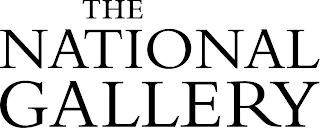1. Labels. Wallace Collection
Share your thoughts on the identification of paintings within the Wallace Collection. Do the titles and artist names feel more integrated with the art when engraved/painted upon frames? Do you prefer object labels (separate labels outside of frames)? What feels appropriate for this collection?
While I can understand them wanting to create a sense of integration and old world style by incorporating the names and artists in the frames themselves I found this to be distracting and more then that to be difficult to read. Also, this kind of labeling was inconsistent through out the gallery as some paintings were named on the frame while other had labels outside the frame. At the very least they should keep using the same system through out. I personally definitely prefer separate labels outside the frames. I can enjoy the painting then examine the clearly legible label with the artist's name, the title and the year. One thing I loved was in the National Portrait gallery not only did the labels provide that information but they also gave some background description of what was going on the painting or who the person was. This helped me appreciate the pieces a more. With all that being said I understand that this is a private collection and it was meant to be kept close to how it was originally displayed. It would be strange for a collector to label their paintings like they do in museums. This kind of labeling on the frames fit well with the Wallace Gallery and the old style of the paintings that are housed there.
2. Object of Appreciation. Wallace Collection
What object captivates your attention and why?

3. Object of Excessive details/ornamentation Wallace Collection
What object either intrigues or disgusts you based upon ornamentation (ornate or lavish detailing)

Walking around the gallery there were so many clocks, chests, candelabras, etc that were gold plated, elaborate, gaudy and over the top. I didn't even consider them to be pretty or hold aesthetic value my only interest in them came from their age and I wrote the gaudiness off to the time period. This table on the other hand, although it has a lot of intricate detail I think it is tasteful and downright beautiful. The inlaid shells or whatever creates that incandescent color is absolutely beautiful. The detail of the houses is really nice and I could imagine this in a modern home.
4. Favorite Museum
Please tell me your favorite Museum experience and why?
It is really tough to pick just one museum experience as a favorite, they were all so different and I enjoyed certain things about each one. The Tate Modern, Tate Britain, Portrait Gallery, and Saatchi were all incredible but if I had to pick it would be a tie between the Saachi Gallery and Tate Modern. I even went back to the Tate two more times. The Tate Modern was one of the first modern art museums we went to and it really introduced me and gave me my first taste of what modern art was all about. I feel like the Saatchi Gallery took this kind of art multiple steps forward and continued my education of what art could be outside of the Renaissance paintings I had always seen. At the Tate I experienced a Jackson Pollock, Picasso, and fell in love with the surrealist/dream room. I was completely lost in the shapes, colors and imagination of these artists. At the Saatchi Gallery I felt like I was experiencing something that I never knew existed. This art was innovative and exciting. Some of it was terrible but in a great way that made me want to keep looking at it.
5. Museum Interest
Do you have a greater interest in visiting Museums after taking this course? Were you previously intimidated by art? Do you have a greater interest in museum branding / design (logos, labels, mapping, graphics)?
6. Any additional comments
I have definitely enjoyed this class. When my boyfriend came to visit I made sure to take him to the Tate Modern and show him around because I was so excited by the whole museum. On my own I doubt I ever would have visited all these places or experienced them in such an in depth way. London can be a large and intimidating city and this class gave me an incredible opportunity to see so many museums and travel around the city in a manageable way. I can't wait for this summer when I can explore even more museums in the City and see what they have to offer.

























